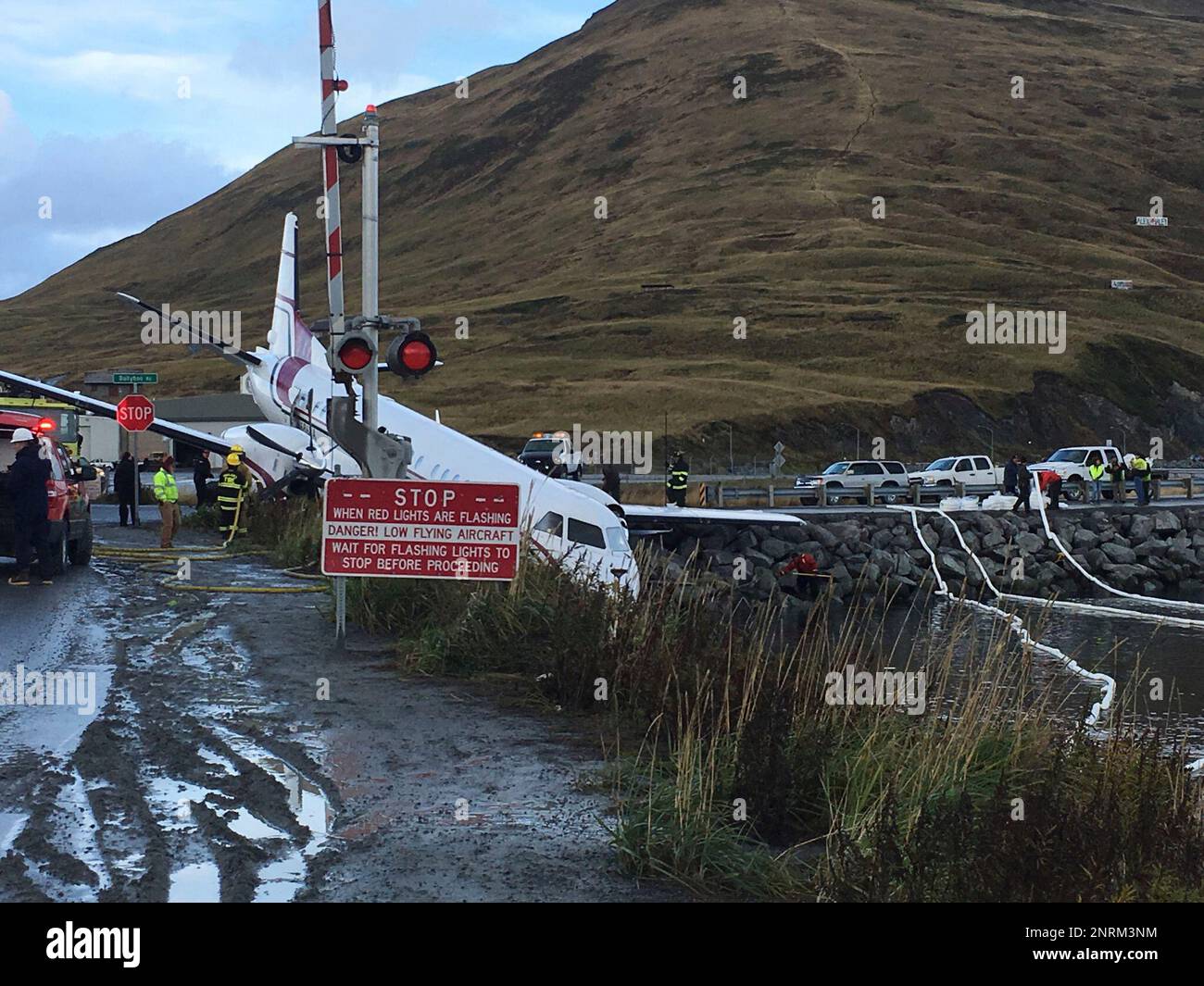Authorities in Alaska are on a race against time to recover the wreckage of a small commuter plane that crashed on the Bering Sea’s unstable sea ice near the western city of Nome. Onboard the ill-fated flight were 10 passengers, all of whom tragically lost their lives.
This plane crash is among Alaska’s deadliest in decades and occurred under precarious conditions. The incident took place late last week during a routine regional flight, leaving many with grim reminders of the challenges small aircraft operators face in the rugged and weather-prone environment of the Last Frontier.
Local and federal response teams were mobilized swiftly after the plane’s last known communication and an extensive search effort tracked the debris field to the remote ice floes, roughly 34 miles southeast of Nome. However, complicating matters for recovery crews are the hazardous conditions of the ice, which is moving several miles each day due to shifting currents and winds. Moreover, an incoming winter storm with heavy snow and high winds has added an ominous time constraint to their efforts.
Speaking to the urgency of the operation, responders described the environment as “dynamic, unstable, and perilous.” Using a combination of helicopters, light aircraft reconnaissance, and ground teams, efforts were directed to complete the necessary recovery within a tight timeframe before weather conditions took a dramatic turn for the worse.
The aircraft involved has been identified as a Caravan operated by Bering Air, one of Alaska’s largest commuter airlines, serving remote communities across the state. The flight was reportedly heading for Nome but vanished off radar shortly before its expected arrival time.
Weather is often a decisive factor in Alaskan aviation. The state’s vast wilderness provides few road links to remote communities, making small aircraft a lifeline for transporting people, supplies, and medical services. However, this reliance on aviation comes with risks accentuated by unpredictable weather patterns, icy conditions, and, as witnessed here, unstable natural landscapes.
Preliminary investigations suggest that severe weather could have been a contributing factor to the crash, though the exact cause will remain uncertain until officials from the National Transportation Safety Board can examine the wreckage in detail. Unfortunately, removal of the debris and recovery of the victims’ remains are proving to be formidable tasks due to the location and environmental challenges at play.
The sea ice upon which the wreckage now rests is part of a massive, floating pack that drifts according to weather conditions. Crews are competing not only against the incoming snow and wind but also against the shifting ice itself, which could eventually carry significant pieces of the wreckage out of reach.
As local authorities called on additional resources to accomplish the task of recovery, Alaska’s history with aviation-related incidents also drew attention. The rugged terrain and unforgiving climate make it one of the riskiest places for piloting small aircraft. Despite these challenges, air travel remains an essential component of life for its residents, underscoring the delicate balance between reliance and risk.
For relatives of the victims, the tragedy has brought deep sorrow to communities both in Nome and across Alaska. Expressions of grief and community condolences have been shared, with plans underway for memorial services. The region has come together to support those affected by the loss while awaiting further updates from authorities.
This crash comes at a time when aviation safety in Alaska remains in the spotlight. Over the years, federal and state organizations have worked to improve safety conditions, but incidents like this underline the complexity of addressing these systemic challenges. Key safety officials have stressed that while continuous improvements are being sought, the very geography and climate of Alaska will always present extraordinary obstacles.
As recovery teams pressed forward, Alaska’s government also pledged its full support. “Alaska mourns today with the families of those who lost their lives. We are grateful for the men and women working tirelessly to bring closure and answers to this tragedy,” Governor Mike Dunleavy said in a statement.
Despite their tireless efforts, the race to beat the storm introduces a grim scenario. Whatever wreckage cannot be reached before the snowfall sets in will likely remain hidden under layers of ice and snow until spring or summer, when thawing makes conditions favorable once more.
Meteorologists forecast worsening conditions over the weekend, with snow accumulation and wind speeds expected to hamper visibility and vehicular movement. Crews, therefore, continued their endeavors, doubling down amidst a rapidly diminishing window of opportunity.
The recovery mission symbolizes the resilience and unity of Alaska’s communities, but it also adds a somber reminder of the inherent risks faced daily. This tragic crash will assuredly reopen discussions on enhancing safety protocols and management to mitigate future incidents of similar nature.
As the storm approached over Alaska’s icy plains, the task at hand was not just recovering wreckage but also providing closure to devastated families and communities while navigating extreme challenges that define the wilderness of the state.



